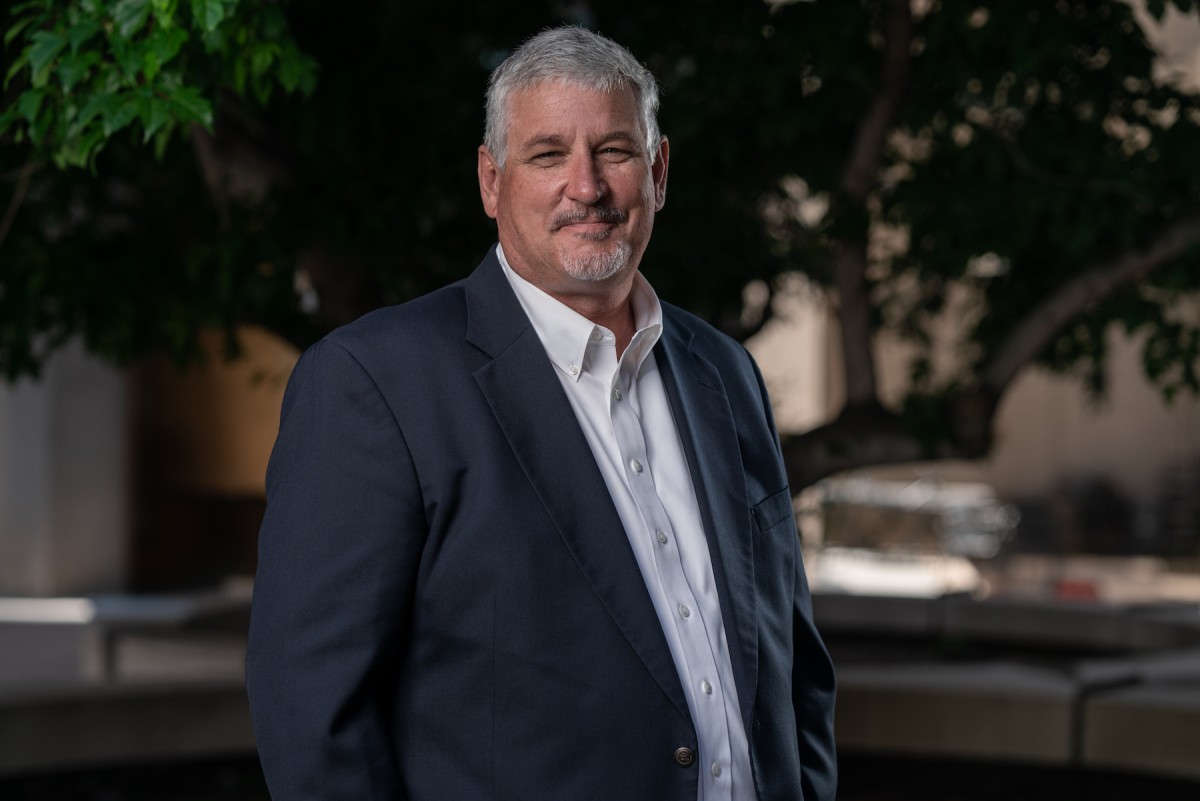Share:
Mark S. Babbitt, Contributor
S. Chris Edmonds, Contributor

For decades, business leaders have invested billions of dollars to improve employee engagement. And yet, common indicators show that we haven’t moved the needle much.
In fact, quite the opposite is true. Since January 2021, over 56 million people have chosen to leave their jobs, evidence that employee engagement, retention, and voluntary separation numbers are continuing to move in the wrong direction.
What can business leaders do to reverse these trends?
Spoiler alert: The answer is… everything.
Leadership has a powerful impact on employee engagement because everything a leader does affects—helps, hurts, or hinders—company culture. Culture influences employee experience, which shapes a worker’s perception of their job over the course of their tenure with a company and builds engagement.
In this article, we’ll explore how leaders can positively shape employee experience by taking ownership, implementing sustainable strategies, and fostering a caring culture that values employees to build and maintain high levels of employee engagement.
The Case of Kraft-Heinz
At one point, this just-outside-the-Fortune-100 company invested significant time and resources to improve employee experience by “building a culture of learning in the workplace, leading with empathy, and keeping employees engaged… ”
And yet, despite providing excellent compensation and benefits, life for many at Kraft-Heinz is anything but delicious. According to Glassdoor.com, many employees feel the company’s demand for working long hours leads to a lack of work-life balance. Burnout and turnover remain major issues for the company.
After being asked to improve employee experience, imagine how HR’s conversation with the Kraft-Heinz executive team might go:
“You want us to help fix employee experience/engagement. Got it. But how do we fix ‘employee experience’ when we know our company culture is burning employees out?!?”
Employee Experience: Do Leaders Know Their Role?
Do leaders at Kraft-Heinz and many other companies understand their role as culture architects? As sherpas of employee experience?
Sadly, too often the answer is no.
Rather than realize they own this core responsibility, business leaders still believe they can delegate critical issues such as employee experience, employee engagement, and even company culture, to lower-level leadership team members or HR.
Employees desire and deserve to be noticed, appreciated, and recognized for their work. That validation must come from their direct bosses and, in the best companies, also the senior leaders.
Unfortunately, any attempt to delegate this vital role to HR departments reduces the positive impact. Additionally, this hands-off approach to leadership is a failure to validate work from the highest levels, which increases employees’ feeling that “nobody notices” and “nobody cares.”
This doesn’t help create an exceptional employee experience and will not result in high levels of employee engagement.
Are Business Leaders Disconnected From Reality?
Within that backstory, and while using our working definition of uncompromising, let’s now take that look at the elements that uncompromising company cultures have in common.
A chasm exists between what employees need and want and what senior leaders provide. Perhaps this is caused by business leaders being out of touch with the work experience desired by their employees, especially those in the “born digital” generations (some Gen X, Millennials, and Gen-Z).
For these leaders, maybe delegation is more manageable than facing reality and having to invest time and energy learning how to implement an uncompromising work culture—and then implementing one.
And what about those leaders who do jump into today’s employee experience conversation?
Too many seem convinced that their best post-pandemic path forward is to return to the 9-to-5, in-office, old normal, presumably where they can more closely monitor employee performance. Unfortunately, this disconnected leadership position contradicts the wishes of 90% of employees who have no interest in returning to an office full-time.
Still, these “because I said so” leaders don’t understand how their antiquated beliefs and behaviors negatively impact the employee experience and, as a result, employee engagement.
And what happens when authority is so thoroughly out of touch with what their people most want and need?
Rebellion.
A Quiet Revolution
As culture architects ourselves, we believe the tectonic shifts we’ve seen throughout the workforce over the last two years aren’t caused by “The Great Resignation.” Instead, we’re witnessing “A Quiet Revolution.”
Since the COVID-19 pandemic hit, we’ve seen business leaders lose control of their workforce. Moving to remote or hybrid work, after all, wasn’t the leader’s idea. That necessary evil was forced upon them by COVID-19.
With the worst of the virus behind us, leaders are once again leaning into what they know best: driving results through compliance and conformity. Emboldened by the confidence they have in outdated beliefs and assumptions, and by relying on precedent rather than creative solutions, they attempt to regain control.
How do employees react? They walk away from organizations where the dominant leadership style includes the need to control or an exclusive focus on results, and they find employment more closely aligned with their personal values.
They go to work for leaders who care as much about the people doing the work as the work itself. And while understanding they must help drive optimal results is a critical element of the employer-employee pact, they seek respect. Perhaps most importantly, they pursue more adaptable leaders who understand their impact on employee experience.
That’s not some momentary blip on the radar. When 56 million people choose to move on in a short amount of time, that is nothing short of a revolution. Workers are, perhaps quietly, demanding more from those in authority.
Five Indicators a Leader Cares About Employee Experience
As they become part of the 44% of people willing to quit their jobs in 2022, how do employees know they’ve found what they’re fighting for: a human-centric, purpose-driven leader?
To help answer that question, let’s look at the five leadership traits that indicate a leader is willing to adapt to improve company culture, employee experience, and, ultimately, employee engagement.
Self-Awareness
We may never know why some leaders remain so committed to their old-school, rigid beliefs regarding what employees should expect from their organization, but we do know that today’s employees are choosing leaders who know better.
Perhaps that’s because, from the perspective of many talented workers, the pandemic changed everything. For two years, workers enjoyed unprecedented freedom and autonomy; their voices finally mattered.
So why wouldn’t employees expect that trend to continue? Why wouldn’t they seek out open-minded, vulnerable leaders capable of active listening? Why would they choose to work for leaders who disregard the clear demands employees have of their leaders?
Today’s best leaders aren’t just more inclusive and compassionate, they understand employees deserve input on decisions that impact their work and their lives. As they co-create their company’s new normal with employees, those leaders are self-aware enough to know they don’t have to have all the answers. They just need to ask the right questions of the right people.
Does self-awareness make a leader look weak?
No. Instead, a self-aware leader exudes humble curiosity. Their goal isn’t to look smart as they cover up their weaknesses. Instead, they project a willingness to engage in continuous improvement while seeking input from people who complement their strengths.
Market Awareness
Today, old-school, rigid leaders tend to blame a so-called “labor shortage” for failing to attract and retain top talent. However, the reality is that people do want to work. In most cases, they must work.
But they don’t want to work lousy jobs for bad bosses at companies with toxic cultures.
And that is where market awareness becomes a critical leadership trait. If a business leader is playing the blame game (people, politics, etc.), they aren’t analyzing what is different about this workplace in these times.
Rather than adjusting to new realities, they find themselves marooned on “that-is-the-way-it-has-always-been” island. Worse yet, instead of seeking a creative way to get off the deserted island, they blame others for the lack of a solution to their problems.
Our best leaders today embrace today’s market conditions. They accept that the old normal, with its antiquated Industrial Age “best practices” and a consistently poor employee experience, is never coming back. Nor should it.
In today’s workplace, leaders must first realize that employees of all generations desire and deserve a workplace where they are respected and validated for their ideas, efforts, and contributions, every day. Then, to build an effective talent strategy, leaders must partner with talented, engaged employees to co-create a closer-to-ideal workplace.
Otherwise, by the time they finally get off the island of isolation, it may be too late.
Extreme Ownership
A phrase first popularized by author Jocko Willink, “extreme ownership” is a proven and powerful leadership approach designed to help solve real-world problems by taking full responsibility.
As it applies to employee experience and company culture, extreme ownership means the leader is solely responsible for how employees perceive their daily experience.
If you are a company’s CEO, you are directly responsible for the entire staff. If you’re a formal leader in your organization (director, regional leader, department head, project team leader, front-line supervisor, etc.), you are solely responsible for the creation of a purposeful, positive, productive work subculture for that team. And you are responsible for the employee experience for every member of that team.
When it comes to culture and employee experience, how do we know if a leader demonstrates extreme ownership?
- They learn what their employees consider important today using an inclusive approach to collecting data on all generations, genders, and other demographics.
- They modify any policies, procedures, and practices that may erode team members of any generation’s needs and preferences.
- As needs, preferences, and circumstances change, they listen and act to ensure all ideas have the opportunity to thrive, efforts are appreciated, and wins are celebrated.
Through extreme ownership, leaders provide social proof they care about the work, and about the people doing the work.
An Equal Focus on Respect and Rules
To the detriment of workplaces everywhere, most leaders over the past century have demonstrated an almost exclusive focus on results. From company culture to the creation of minimal work standards to executive compensation, this singular focus impacts every aspect of the workplace.
Because leaders were driven by the bottom line, it didn’t matter how they got the results they coveted, only that results were delivered and expectations exceeded.
- Need to ask a team to work so much overtime they risk burnout? Without remorse… done.
- Need to lay off hundreds of people to prove you cared about the bottom line? So be it.
- Need to promote another older, white male to an executive position while passing over an equally qualified female or person of color to keep the board of directors happy? Done.
Today, the human-centered leaders who live and breathe employee experience don’t consider these actions, much less rationalize them. Instead, they treat each employee with the respect they’ve earned and now expect.
In the end, these leaders know that the employee experience, and the uncompromising company culture that drives that experience and leads to engagement, isn’t just an ideal. Rather, it is a collection of desirable values and behaviors that are lived, coached, measured, and celebrated.
A Forward-Facing View of the Workplace
For some time now, public health concerns have forced leaders to be reactive. With each new pandemic wave, what political leaders originally told us would be a short-term issue became a two-year (and counting) ordeal. Collectively, and literally at times, we went into survival mode. Each of us, in our way, did the best we could.
While the pandemic might still force us occasionally to retreat to reactive mode, we leaders must focus once again on a holistic approach to employee engagement. Specifically, we must craft and sustain an employee experience not based solely on the novelty of working from home if we want to really grow engagement.
At the same time, that experience must be rooted in an uncompromising company culture that ensures good—good for employees, contractors, customers, and the company—comes first.
Specifically, leaders must:
- Define their organization’s servant purpose (besides making money) with a statement that articulates how the company improves the lives of employees, customers, and those within the community it serves
- Define their core values in terms of observable, measurable behaviors; for example, the value “integrity” could be simply defined as “I do what I say I will do”
- To maintain our focus on the “results” side of “respect and results,” align servant purpose, values, and behaviors with the organization’s strategies and financial goals
- Systemically hold people accountable for both performance (results) and values (respect) expectations; otherwise, leaders are showing a willingness to compromise
- Model, celebrate, measure, coach, and mentor their servant purpose and valued behaviors, and expect every formal leader to do the same
For all that to happen, leaders can’t focus on what happened in 2020 and 2021. Instead, they must embrace the challenges that lie ahead with an appropriate mix of awareness, optimism, and humility.
A Leader’s Intentional Impact on Employee Experience
There’s no doubt that everything a leader does, including every decision made, message sent, action taken, and value modeled, impacts the employee experience and, as a result, employee engagement.
So we encourage you to be intentional about your impact on those you serve as a leader. Each day, and in every interaction, think about how your behaviors influence those you lead, whether in a good way or not-so-good way.
As you secure some quick wins and create contagious pockets of excellence, learn from your strengths and opportunities for improvement. As a mentor, and to facilitate and accelerate personal and professional growth within your leadership team, share your triumphs and struggles with fellow and up-and-coming leaders.
Soon, employees will see you as a leader determined to create and sustain the best possible experience.

Mark S. Babbitt is President of WorqIQ, a firm that helps organizations understand leadership’s impact on culture, the company’s collective level of Workplace Intelligence (WQ), and what “good” means to them. He is also the author of the best-selling book, Good Comes First.

S. Chris Edmonds is a speaker, executive consultant, and founder of The Purposeful Culture Group. He’s also the author of two Amazon best sellers: Good Comes First and The Culture Engine.


